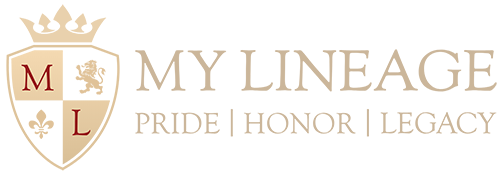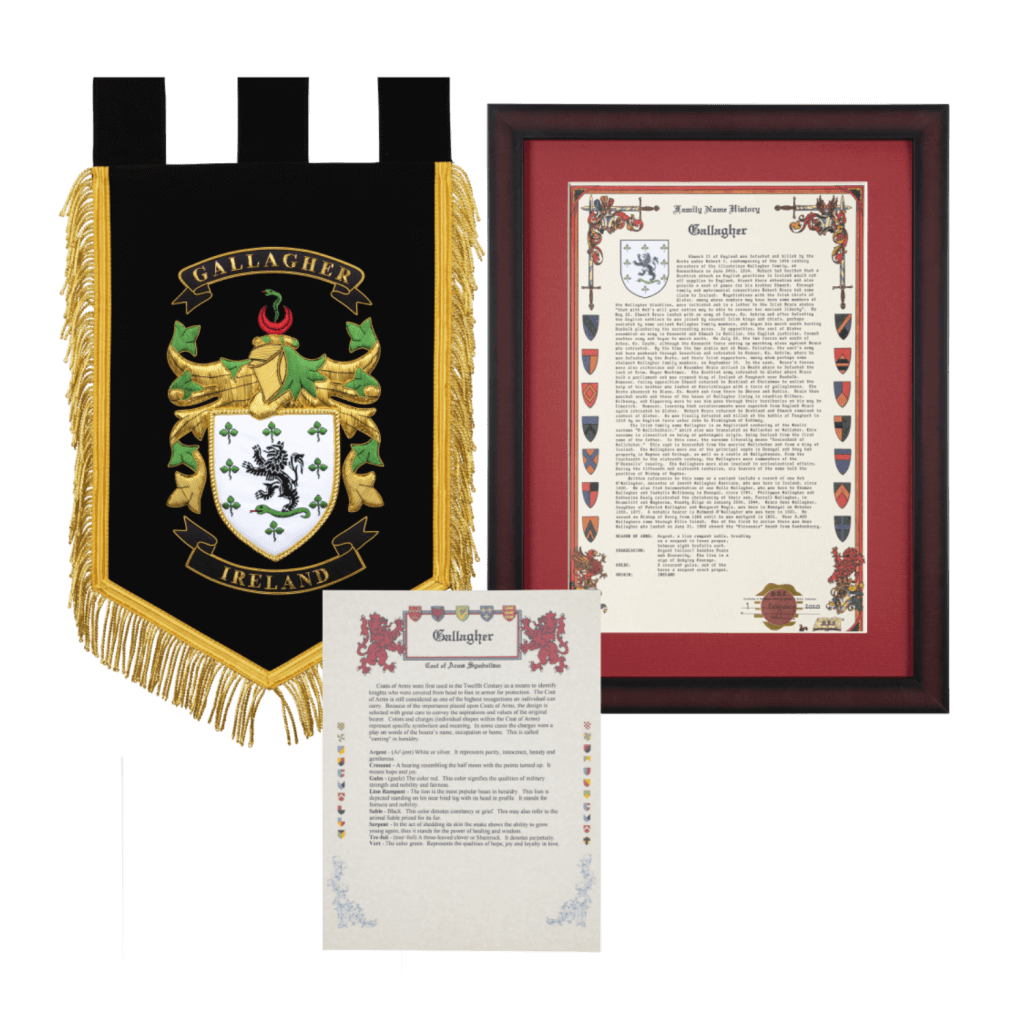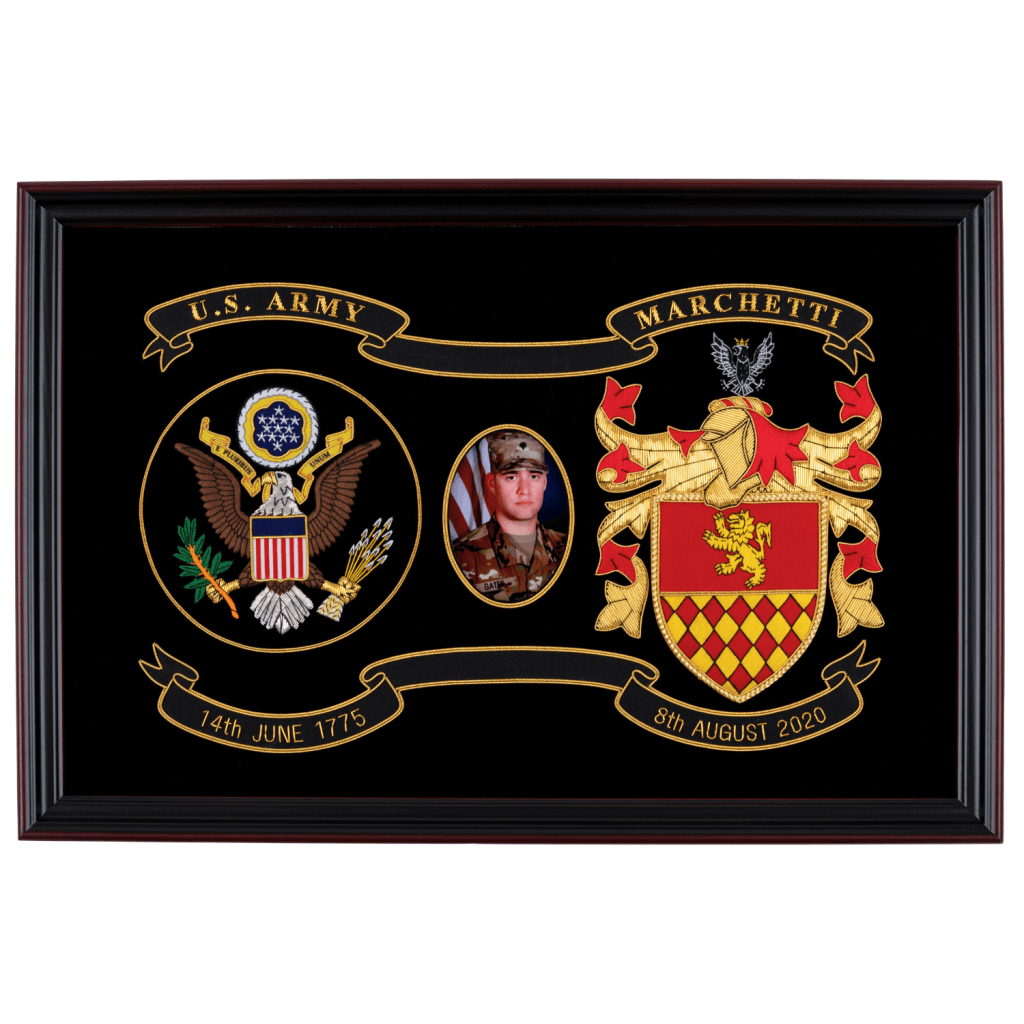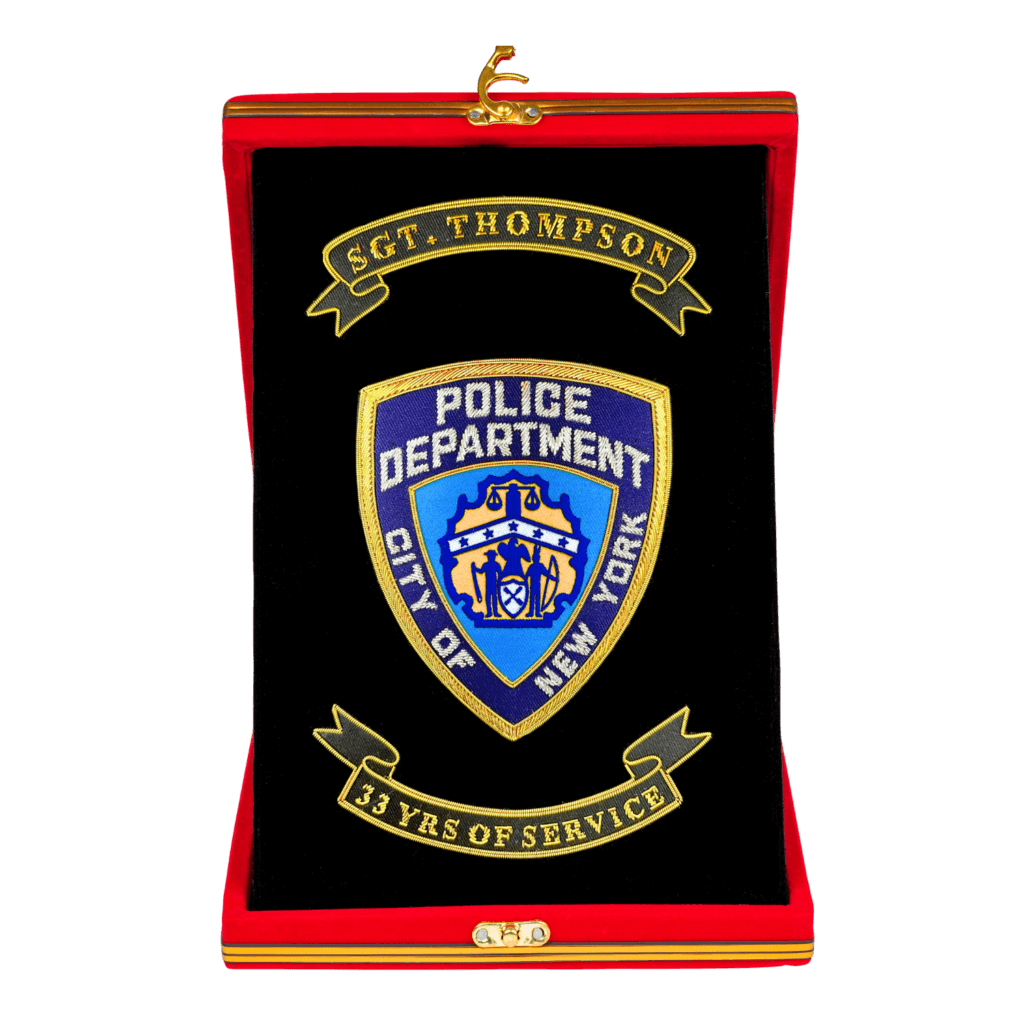C
Caltrap
A Caltrap or gal trap, and sometimes a cheval trap, was an ancient military instrument with four points, arranged so that when it was thrown on the ground, it always landed on three of the four points, with the fourth pointing up.
Caltraps were scattered in the path of an enemy to impede and endanger the horses. The emblem of the Caltrap in heraldry indicates a fierce warrior in battle.
Camel
The camel signifies temperance, patience and perseverance. In ancient times it may have been used as a sign of royalty and dignity.
The camel is blazoned on very few arms.
Cameleopard
The medieval name for an ordinary giraffe was a cameleopard. It was a widely held belief that crosses between animals existed, just as the mule existed and was a cross between a horse and a donkey.
The camel and the leopard were well known animals at that time and it was likely that a crusader in the east saw an unknown animal and either he accounted for it this way or it was theorized far away at home, that the giraffe was the creature that was begotten by a leopard and a camel.
The scarcity of these animals was further explained by the knowledge that such hybrids, like the mule, cannot reproduce.
Castle
In heraldry, the castle has often been granted to one who has faithfully held a castle for his sovereign, or who has captured on by force or stratagem.
The castle signifies spiritual power and vigilance on the watch as well as home and safety. The tower is very similar to this and is an emblem of grandeur and society.
It is a symbol of defense and of a steadfast individual.
The visual difference between a tower and a castle is that a tower is a single column topped by a turret, and a castle usually has two towers joined by a wall with a door in it. This was a distinction that was rarely observed in ancient days, but now it is faithfully adhered to. When smaller towers surmount either a castle or a tower it is called ‘triple-towered’.
Cat
A symbol of a great cat, or a cat-a-mountain, which refers to a wildcat, signifies liberty, vigilance and courage in heraldry.
Cats can be in many different positions like the lion, but they are most often blazoned passant, walking with right forepaw raised.
A cat-a-mountain is supposed to always be guardant, or on guard, with the head completely facing the observer. Cats are most common in Scottish or Irish arms.
Celestial Crown
The crown is an emblem of victory, sovereignty, and empire in heraldry. It is a visible sign of success thus the term ‘crowning achievements’ and its significance as the decoration of the ultimate level of rank and power, makes bearing he crown a great honor.
Crowns are also sometimes symbols of God, as he is considered by some to be the ‘King of all’. The word crown, blazoned without any additional details, usually implies a ducal coronet without a cap.
The celestial crown closely resembles and eastern crown, having eight sharp, triangular rays, only five of which are seen m, with the addition of a five-pointed star on each ray. It was an ornament that frequently represented the achievements of deceased ladies and it was also often given to people or institutions connected with the church.
Centaur
Centaurs are well known creatures that are half man and half horse.
A centaur carrying a bow and arrow is called a Sagittarius.
Both the Sagittarius and the centaur are quite common in heraldry, especially on the continent.
King Stephen is said to have assumed the symbol of Sagittarius because the sun was in that sign when he ascended the throne.
The centaur is a symbol of virility and one who has been eminent in the field of battle.
Chains
Chains are a symbolic representation of reward for acceptable and weighty service. They are frequently met with in continental heraldry, particularly in southern France and Spain, and they are also accessories to more common charges, for example the portcullis.
They are often accompanied by crowns and collars, meaning that the owner of that symbol is chained by a sense of obligation to the people that he serves or rules. For this reason, chains and collars are also marks of honor for sheriffs and mayors, and formerly, for knights.
Chaplet
A chaplet is a wreath without stems or ribbon, made of oak, laurel or other leaves, and carrying flowers, usually roses. In heraldry, it is a symbol of fame and is frequently part of a crest.
There is also a chaplet that looks like a plain, broad circlet, charged at four regular intervals with stars, roses or other objects.
A chaplet of oak and acorns is called a civic crown, but more frequently the chaplet is synonymous with wreath or garland, which is commonly made of laurel and roses.
Chess-rook
A chess-rook is also called a castle and may have been granted to those who had captured or defended castles.
It may also have denoted one who was skillful in influencing others to act to his own benefit, as the chess player moves his pieces in the game.
It is an ancient bearing in heraldry and it also occurs quite frequently. It is a device used by the Earls of Rochford.
Chevron
The chevron occurs very frequently in British and French heraldry and is comparatively rare in German heraldry.
The chevron represents the foot of a house, derived from the French work ‘chevron’ meaning rafter. It signifies protection.
The chevron was granted to those who had participated in some notable enterprise, had built churches or fortresses, or had accomplished some work requiring faithful service.
The chevron used to almost reach the very top of the shield and then more nearly attained the 1/3 of the surface of the shield that was allotted to it by the guidelines of heraldry. Now it is drawn lower and with a less acute inner angle to allow more devices to be represented more attractively, and an artist may draw the chevron at the height and angle that will best suit the accompanying charges.
The chevronel, is a diminutive of the chevron and is much narrower. Chevronels may be stacked on top of each other or side-by-side at the same height, which is termed, interlaced or braced. A field composed entirely of an even number of chevrons is called ‘chevronny’.
Chief
The chief is a broad band across the top of the shield that stands for authority and domination of will.
The chief has often been granted as a special reward for prudence and wisdom, as well as for successful command in war.
The chief theoretically contains the upper 1/3 of the shield, although it rarely actually does.
The chief is never surmounted by any other ordinary (a simple background symbol) except for in very exceptional cases.
A chief is also never couped (cut off before reaching the edges of the shield) or cottised (surrounded closely by smaller bars), and it has no diminutive.
Chimera
The chimera is a very odd looking creature in heraldry with the head abreast of a woman, the forepaws of a lion, the body of a goat, the hind-legs of a griffin (the legs of a lion and claws of an eagle), and the tail of a dragon. It is not found it heraldry very often and is not unlike the sphinx in many ways.
Cloud
The cloud, the symbol of the ethereal heights of heaven, represents the quality of higher truth.
They are very seldom used as bearings on arms but quite frequently arms are represented as issuing from them, particularly in French arms.
Cock
As the herald of the dawn, the cock is symbolic of the sun. It is also a bird of great courage in battle that will fight, if necessary, to the death. Therefore, in heraldry, it is an emblem of vigilance and courage.
The cock is also used as a Christian image of the resurrection. The gamecock in heraldry refers to a slightly different symbol of a cock without its comb and wattles, as was the case when birds were prepared for cockfighting. This symbol is less common, though, than a regular domestic cock.
Cockatrice
The cockatrice is a fabulous king of serpents, with the head and legs of a cock, the wings of a dragon, and a scaly body, also like a dragon, that flows into a long-barbed tail.
It can also be called a basilisk, of which legends say was produced from an egg laid by a nine-year-old cock and hatched by a toad on a dunghill. Its breath and sight were so poisonous that they would kill all who came within range.
Thus, the cockatrice is a potent symbol of terror. The heraldic basilisk is supposed to have a tail that terminates in the head of a dragon, though if such an example exists, it is very uncommon in heraldry.
Cockfish
The cockfish is drawn very much as it sounds with the head and upper-body of a cock terminating in the lower-body and tail of a fish. It is a very uncommon symbol in heraldry.
Column
Columns symbolize fortitude and constancy. It is a metaphorical heraldic device, implying that its bearer supports others who are weaker.
A serpent coiled round a column signifies wisdom with fortitude. Columns, also called pillars, commonly resemble ones of the Tuscan order bur are often otherwise specified. Plain Norman shafts with cushion capitals can also be found. The capital, the base and the pedestal are sometimes mentioned in the blazon.
Comb
In heraldry, the comb is the common attribute of certain mythical female beings such as lamias, sirens, and mermaids, whose usual pose is with mirror and comb in hand.
It have sometimes been given to those who were said to have fought or resisted the temptations of such dangerous types, but heraldry the comb more often refers to a wool-comb or the combs used in the textile industry, which is not an uncommon heraldic device.
The comb with no other specification in the blazon is drawn like a capital ‘I’ on its side with teeth filling in both sides of the spine. The wool-comb, also called a jersey-comb or a flax-comb, looks like a small rake. Another type is the currycomb, though this is exceptionally uncommon and has no definite representation.
Cottise
A cottise, or cottice, is a diminutive of an ordinary such as a bend, a pale or a fess, ¼ of the width of that ordinary. In heraldry, it never exists alone, but always accompanies one of the ordinaries.
An ordinary is said to be cottised when it is set between a pair of cotises and an ordinary may be double or treble cottised with two or three cotises on either side.
The cotises emphasize the significance of the ordinary and are usually applied to a bend.
Crab
The crab is a symbol of great strength and power in gripping and holding. It occurs on the coats of arms of several families.
The sign of the lobster in heraldry is also a symbol of prodigious gripping and holding power in its bearer and the symbols of its claws occur in arms more frequently than its entire body.
Allied to these two charges is the crayfish, which is also referred to as a crevice.
Crane
According to legend, cranes lived in a community in where individual members took turns standing watch.
The sentry crane held a stone in one claw so that if it dozed, the falling stone would wake the bird.
The crane is a symbol of vigilance, justice and longevity, but nevertheless, there are instances where the crane is depicted dormant (asleep) with its head under its wing, still holding its ‘vigilance’, as the stone is termed.
The stork and the heron, also called a Herne, are very similar to the crane. Both birds were emblems of filial duty and gratitude or obligation, and like cranes, storks were believed to stand watch for each other.
All three birds are usually depicted with wings close, the crane in its vigilance and the stork holding a snake, while the heron often holds an eel.
Crescent
The crescent stands for one who has been ‘enlightened and honored by the gracious aspect of his sovereign’. It is also borne as a symbol of the hope of greater glory in heraldry.
Knights returning from the crusades introduced the crescent, the badge of Islam, into the language of heraldry. The heraldic crescent has a very deep base and curving horns that quickly sharpen to point close together.
Crescents also represent the moon that lights the night sky for travelers, though it does not resemble the shape of a crescent moon very closely. In English arms it’s was also a mark of cadency signifying the second son.
The reversed crescent is a crescent with the horns turned down. The term in crescent indicates a crescent with the horns facing the observer’s left, and decrescent is a crescent facing the observer’s right.
Crocodile
The crocodile was a mysterious and legendary beast to most people in ancient times and it was a powerful emblem of fury and power.
The uncertainty of the drawings means that in reference to the symbol in heraldry, the crocodile is frequently interchanged with alligator.
It occurs as a crest and a supporter but is, nevertheless, an uncommon heraldic charge.
Crown
The crown is an emblem of victory, sovereignty, and empire in heraldry. It is a visible sign of success, thus the term ‘crowning achievement’, and its significance as the decoration of the ultimate level of rank and power, makes bearing the crown a great honor.
Crowns are sometimes a symbol of God, as he is considered by some to be the ‘King of all’.
The word crown blazoned without any additional details usually implies a ducal coronet without a cap.
Crown Vallary
The crown is an emblem of victory, sovereignty, and empire in heraldry. It is a visible sign of success, thus the term ‘crowning achievement’, and its significance as the decoration of the ultimate level of rank and power, makes bearing the crown a great honor.
Crowns are sometimes a symbol of God, as he is considered by some to be the ‘King of all’.
The word crown blazoned without any additional details usually implies a ducal coronet without a cap.
A crown palisade is the name of a crown with palisades on the rim forming the spikes of the crown. This can either look like the pickets of a fence, or less correctly, like the silhouette of small houses side by side with every other one upside down, with the roof of each upside down one cut out of the metal.
The latter description is called a champagne border. It is said that Roman Generals awarded the crown palisado to the one who entered the camp of the enemy first after breaking thorough their outworks.
It is also called a crown vallary from the Latin vallus, which roughly translates to palisade.
Cup
In the heraldic tradition, the vase and similar vessels are considered symbols of fertility in heraldry.
The cup, covered or uncovered, is also sometimes representative of the chalice used in the communion or the Mass.
On the other hand, the chalice used in the Eucharist may be symbolic of a layman’s interest in church government. It may also be used as a symbol of faith.
Other vessels in heraldry include, drinking glasses, bowls, a pitcher, and posts, such as a pot of lilies.
Cushions
Cushions have been looked on as marks of authority in heraldry and have been borne by several noble families. Cushions appear in heraldry more often that one might think. They appear to be quite ancient symbols, especially in Scottish heraldry.
The Earls of Moray bore cushions on their arms for example.



